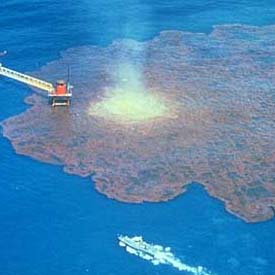New containment cap stops oil flow in Gulf of Mexico
 A test of the new containment cap on the well gushing oil into the Gulf of Mexico has stopped the flow of crude, a BP official said on Thursday.
A test of the new containment cap on the well gushing oil into the Gulf of Mexico has stopped the flow of crude, a BP official said on Thursday.
BP engineers closed all three valves on the massive containment cap and oil stopped spewing into the water a mile below the surface for the first time since April 20, when the Deepwater Horizon rig exploded, killing 11 workers.
BP Vice President Kent Wells said during an interview with NPR, "We will be monitoring the pressure carefully every 6 hours. It was quite something to see."
Thad Allen, the retired U. S. Coast Guard admiral overseeing the U. S. government's response to the gulf oil disaster, exhibited restraint in a statement about the latest developments.
Allen said, "We're encouraged by this development, but this isn't over. Over the next several hours we will continue to collect data and work with the federal science team to analyze this information and perform additional seismic mapping runs in the hopes of gaining a better understanding on the condition of the well bore and options for temporary shut in of the well during a hurricane. It remains likely that we will return to the containment process using this new stacking cap connected to the risers to attempt to collect up to 80,000 barrels of oil per day until the relief well is completed."
The integrity test could last up to 48 hours to determine if the well is intact, or if pressure drops, to determine if oil is leaking from someplace other than the well head. BP has said that if the well is compromised, it would reopen the valves on the cap and pipe oil to be captured by ships on the surface.
CNN has reported that during a daily technical briefing earlier on Thursday, BP officials said they removed and replaced the leaking choke line that forced suspension of well integrity test preparations. (With Inputs from Agencies)